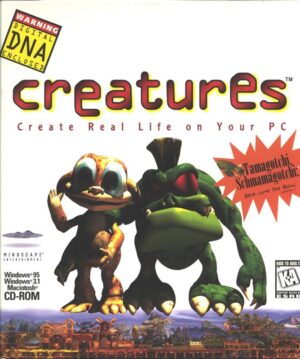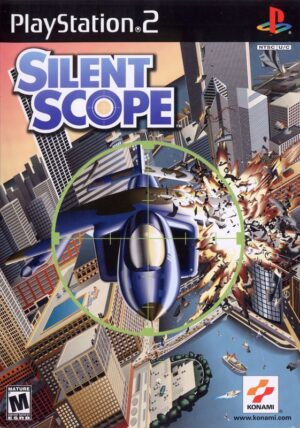Retro Replay Review
Gameplay
Mega Man Zero 3 refines the series’ signature run-and-gun action with a wealth of new mechanics while retaining the tight platforming that fans love. You once again assume the role of Zero, charged with tracking down the escaped Dark Elf before it can brainwash the Resistance and tip the war in Neo Arcadia’s favor. Levels are intricately designed, offering multiple paths, hidden collectibles, and environmental hazards that demand both reflexes and strategy.
The introduction of the chip system adds a fresh layer of customization. Scattered throughout stages are chips that can grant Zero new abilities—everything from elemental weapon upgrades to mobility enhancements. Players must choose which chips to equip before each mission, creating a strategic pre-mission puzzle: do you prioritize offense, defense, or utility for the upcoming challenge?
Meanwhile, the improved Cyber Elf system allows for persistent buffs, healing, or special abilities at the cost of those elves’ lives. To mitigate the risk of permanent loss, Capcom introduces “Cyber Space” segments: hidden chambers accessible through special doors where you can deploy Cyber Elves freely without consequence. Though these pockets of safety encourage experimentation, the limited number of Secret Disks inside Cyber Space nudges you to conserve your elves in normal stages, adding tension and resource-management depth to every playthrough.
Boss encounters remain a highlight, each presenting unique patterns and requiring mastery of both Zero’s base moveset and any equipped chips. The difficulty curve ramps up in satisfying ways, pushing players to refine their techniques and learn boss tells. Checkpoints are thoughtfully placed, striking a balance between challenge and frustration, ensuring that repeated attempts feel rewarding rather than punishing.
Additionally, stage objectives sometimes demand more than simply reaching the end. Whether it’s rescuing captive Resistance members or locating hidden data fragments, these optional goals promote replayability and encourage thorough exploration. For series veterans and newcomers alike, Mega Man Zero 3’s gameplay loop offers a compelling mix of action, strategy, and discovery.
Graphics
Visually, Mega Man Zero 3 is a testament to the artistry of late-era Game Boy Advance titles. Character sprites are crisp and expressive, with Zero’s trademark boot kick and Z-Buster shots animated fluidly. Enemy designs range from mechanical drones to grotesque virus-infected creatures, each rendered with surprisingly rich detail given the hardware limitations.
Backgrounds in each stage are layered and dynamic, often shifting to reflect in-game events—such as cascading waterfalls, electrical discharges in factory zones, or flickering holographic displays in Neo Arcadia’s halls. The color palette remains bold and varied, ensuring that even the darkest environments feel vibrant and alive.
Cutscenes employ a combination of static art and simple animations, seamlessly integrating with the gameplay and advancing the narrative without jarring transitions. Character portraits during dialogues showcase expressive line art, lending emotional weight to story beats. While not as graphically advanced as console cousins, Zero 3’s aesthetics stand out as some of the best on the GBA.
Special effects—like chip activations, electric barriers, and Cyber Space distortions—are both flashy and readable, allowing you to appreciate the spectacle without losing sight of on-screen hazards. Even in hectic boss battles, frame-rate dips are minimal, preserving the breakneck pace that Mega Man Zero games are known for.
Overall, the game’s visual presentation perfectly complements its gameplay and narrative, creating a cohesive atmosphere that draws players deeper into its world. Whether you’re darting through icy caverns or infiltrating high-tech facilities, the graphics consistently impress and support the action.
Story
Picking up shortly after the events of Mega Man Zero 2, the story thrusts Zero into a race against time to stop the malevolent Dark Elf from subjugating the Resistance. The narrative unfolds through mission briefings, in-stage dialogue pop-ups, and mid-mission cutscenes, striking a balance between exposition and action.
Capcom builds upon the series’ recurring themes of free will, sacrifice, and the nature of humanity through Zero’s interactions with both allies and foes. The Dark Elf’s sinister influence casts doubt on familiar faces, leading to tense confrontations and morally ambiguous decisions that give the plot real emotional stakes.
New characters—such as Freedom Guardian members and resurrected Maverick operatives—add layers of complexity, each with their own motivations and backstories. These arrivals keep the story fresh, preventing fatigue from the repeating cycle of threat, infiltration, and boss showdown.
While some narrative beats follow predictable Mega Man tropes, the writing is more mature and introspective than earlier entries in the franchise. Themes of corruption, loyalty, and redemption resonate throughout, giving players more than just an excuse to blast robots; they have a story that rewards attentive engagement.
The conclusion ties up plot threads neatly while leaving room for future installments, satisfying series fans but also leaving them eager for the next chapter. For those who enjoy a storyline that complements rather than overshadows core gameplay, Mega Man Zero 3 delivers an engaging sci-fi saga.
Overall Experience
Mega Man Zero 3 strikes a remarkable balance between accessibility for newcomers and depth for seasoned veterans. Its core mechanics remain tight and responsive, while the chip and Cyber Elf systems encourage experimentation and strategic planning. Each mission feels purposeful, whether you’re racing a timer or scouring every nook for hidden collectibles.
The game’s pacing is expertly crafted: it alternates between intense boss struggles, rapid-fire platforming sections, and quieter moments in Cyber Space for upgrading and exploration. This ebb and flow prevent monotony and keep players invested throughout the roughly six to eight hours it takes to complete the main story.
Replayability is high thanks to optional objectives, collectible-based unlocks, and a harder “Ultimate Mode” that challenges even the most skilled Zero pilots. Completing missions with high ranks or discovering every Secret Disk will appeal to completionists, extending the title’s longevity beyond its initial playthrough.
Despite minor gripes—such as occasional trial-and-error segments in boss fights or the scarcity of Secret Disks in Cyber Space—Mega Man Zero 3 stands as one of the best entries on the Game Boy Advance. It exemplifies how a portable action game can deliver console-quality depth, polish, and replay value.
For fans of fast-paced platforming, robust customization, and a compelling narrative, Mega Man Zero 3 is an essential addition to any handheld collection. Capcom’s dedication to refining and expanding the series’ formula pays off handsomely, resulting in an experience that’s both challenging and highly rewarding.
 Retro Replay Retro Replay gaming reviews, news, emulation, geek stuff and more!
Retro Replay Retro Replay gaming reviews, news, emulation, geek stuff and more!









Reviews
There are no reviews yet.